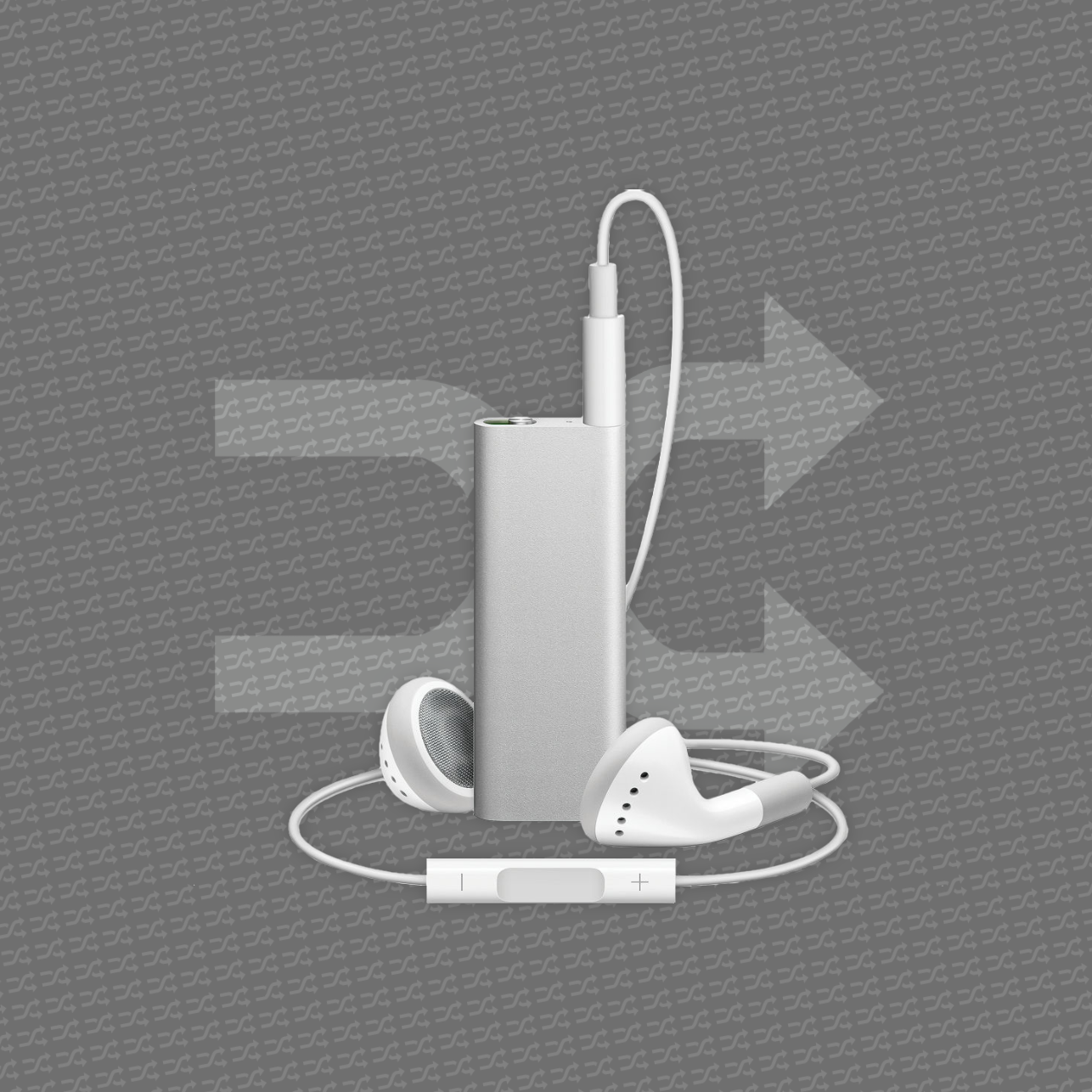Pushing My Buttons
The 3rd generation iPod shuffle debuted in 2009. Originally coming in Black or Silver, the iPod shuffle came with 4GB of storage & retailed for $79.
The Godfather Part III, the Matrix Revolutions, the 3rd generation iPod shuffle, Spider-Man 3; all share a common trait of being widely regarded as the worst instalments in their brand's history.
To understand why I'm saying this, you need to look no further than what came before. In September 2006, Apple announced the second-generation iPod shuffle. The second-generation shuffle was much smaller than the one released the year prior, came in a variety of brushed aluminum finishes, featured playback controls (play/pause, volume up/down, etc.), and included a delightedly convenient clip for attaching the shuffle onto a bag or piece of clothing. It was, in my estimation, the total package.
So when the third-generation of the iPod shuffle launched on March 11, 2009, nearly 2.5 years after the second-generation shuffle's release, it had a lot to live up to. How'd it do? Well, for starters, it was smaller (people like that, I suppose), had a clip (doing good so far), but it didn't come in multiple colours (just Silver and Black to start) and did away with any playback controls on the device. It is just a tiny block of aluminum with a clip, a LED indicator light, and a single toggle to switch between off, shuffle, & ordered playback.
All four generations, from first through the fourth, of the iPod shuffle.
The 'no buttons' thing really rubbed people the wrong way, with reviews finding the new operation both limiting and cumbersome¹. To operate the device, Apple forced you to rely on controls located on the headphone cord itself. The cable has three places where the user could press: a volume up, a volume down, and then a centre button that triggered multiple operations depending on the combination of holds and clicks you made. A single click paused/unpaused the music, a double-click went to the next track, double-click and hold began fast-forwarding the song, and triple-clicking rewound the track or skipped back to the previous song. But all this blind morse-like clicking didn't end there.
Apple also debuted VoiceOver in this iPod shuffle, a feature that allowed it to vocalize the names of songs, artists and even select between multiple playlists. Apple must've been banking on the idea we were all jonesing to know our songs' names or was hoping that VoiceOver would be the killer feature on this screenless, now buttonless iPod. Clicking and holding the centre button now invoked information about the current song. Users couple double or triple tap after to hear the title of the next or previously played track. And to switch between playlists, users would hold the centre button on their remote until they heard a tone, release the button, and listen as VoiceOver began to sequentially go through each playlist, with users clicking again once they heard the playlist they would like to start listening to.
If all that doesn't sound very intuitive, it's because it wasn't. That unneeded complexity didn't sit well with many shuffle lovers, who felt they were losing a lot more with this iteration of the shuffle than they gained over the previous generation.
Apple also did itself a disservice by relying on playback controls on the headphones themselves to operate the device. This decision forced users to use Apple's Earbuds as compatible third-party cables & headphones with playback controls were limited at the time of the shuffle's debut. The fact that the headphones you owned weren't guaranteed to work with the music player you purchased was a massive turnoff for many people. But at least a pair of Earbuds were included in the box.
Originally released in just Black or Silver with 4GB of storage, new colours (Pink, Green, and Blue) & an additional 2GB storage tier were added in September 2009.
Six months later, Apple updated the 3rd generation with new colours (Pink, Green, & Blue) and added a special edition Stainless Steel iPod shuffle, available exclusively through Apple retail & online for a $20 premium over the $79 Aluminum 4GB shuffle. Apple also announced that third parties were developing cables and headphones compatible with the shuffle, but too little, too late by that point.
The special edition Stainless Steel iPod shuffle retailed for $99. Just looking at this thing the wrong way is enough to scratch it.
While it may not have been the most popular iPod, the third generation shuffle is adored by some for its strikingly minimal aesthetic, a machined stick of aluminum capable of holding upwards of a thousand songs.
The third-generation shuffle was succeeded by the 4th (and ultimately final) iteration of the iPod shuffle announced a year later. It featured a square design smaller than the 2nd generation shuffle, an all-aluminum body, VoiceOver (if you cared), a clip, and the return of Playback controls! This final iPod shuffle was updated with new colours twice over its lifespan before being discontinued five years later in 2015.
¹If you have to say something is 'easy' three times in the first 30-seconds of something you're describing, I start to get a bit suspicious that maybe it's less straightforward than you're making it seem.




